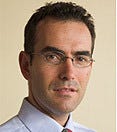My Lockdown Journey Into the Future of Flight
As we entered our first lockdown in Victoria, I was looking for a new interest to distract my now anxious mind. A friend had bought me a small electric paper plane mechanism which I had not taken out the box yet. It was a Kickstarter (experimental funded project) called Powerup and this Dart kit came with A5 paper, which you folded into a typical paper plane and then you slid the unit onto the front and a carbon fibre rod extended along the body of the plane and out the back where a small red prop was expected to push the plane forward.
You used an App on the phone to slide up to accelerate and tilt left and right to shift a thin magnetised rudder just in front of the prop. My Lockdown mornings were now becoming a routine of me driving to a nearby café first thing in the morning where I sipped my coffee in the car while watching YouTube videos on the physics of flight and different experimental planes. My mind began to wonder if this little motor could power some of these designs and that’s how it all started, my obsession with flight.
As a young boy I had loved flying control line models with a Baby-Bee engine. I spent hours trying to get glow heads to ignite the fuel — and the noise, what a noise! My father had been a turret gunner in a Lancaster, 24 squadron SAAF during the war. He had witnessed some of the first ‘long flights’ to South Africa when he was a child and shared his excitement waiting in fields for the likes of Kingsford Smith to arrive. I brought these thoughts together and after more and more coffee induced early mornings, I came across the Horton wing and explored how the two Horton brothers had masterfully designed such a beautiful, heavier than air wing. I decided that I would model this for the Powerup and went about making a 5mm foam sheet model. To my astonishment it worked and was a beautiful slow flyer. I made a few more models but none worked as well as the Horton wing.
I then discovered the maths behind lift as deduced by Ludwig Prandtl where he wrote his paper in 1933 explaining the straight wing was not as efficient as it promoted induced drag. I built a twisted wing to test this and it worked beautifully. It was a slow and steady flier with a grace none of my other models were delivering. This was all brought together for me when I did some Googling and discovered the work, now retired NASA Armstrong Chief Scientist, Albion Bowers was doing. He brought Prandtl’s and the Horton brothers work together into the PRANDTL-D glider project. Not only was he to prove that the twisted wing is more efficient, but he also began to understand this through the bio-mimicry of bird flight.
http://www.amaflightschool.org/sites/default/files/219072.pdf
His speeches amazed me where he explained that twisted wing did not create a wingtip vortex and that this wing produced provers yaw instead of adverse yaw. Was this the future of the wing I was witnessing? I decided to test it myself and I am in the middle of my experimental phase with the Powerup. I’m sure it’s not the most effective modelling system using the Powerup FPV but I now know it completely so I’m making it work for me.
Al Bowers saw how birds in formation did not fly wing tip to wing tip but rather with an overlap. If you measure the overlap you see that the point of intersection is almost at the same place Prandtl deduced the point of wing vortex which is at 0.7
Al Bowers describes the way the twisted wing works without an upright tail as follows: “I want you to imagine for a moment a glass smooth lake and I have a powerboat. The powerboat starts moving and it builds up a bow wave. The boat itself is not pushing the water up but rather the boat is pushing the water down in the middle and as a consequence of that the water reacts and comes up and creates that bow wave. Now I want you to imagine on that bow wave I take two surfboards riding along each side. Now I put an outrigger on there and attach each surfboard and I’m pressing down on those surfboards and they are connected solidly to the boat. Now to make it complete I don’t use a rudder to turn, I push down on one surfboard more than the other to turn.” Al points out that Spedding (ornithologist) calculated that the vortex coming off a Falcon wing was 0.76 apart. Hortons vortexes are calculated as 0.8 apart and Prandtl calculated the vortexes as 0.7 apart. If you imagine the vortex being 1.0, it would be at the wingtip. So with this in mind Al Bowers proposes that we could potentially remove the tail off of a Boeing by changing the structure thus removing a few tons (roughly 3tons) and gaining efficiency.
This has been a little excerpt as to my newfound passion. I am not an engineer, or a mathematician of any sort so please forgive me if I have stated something which is not perfect. All I can say is I am well on my way to getting into the sport of RC flying and attempting to see over the edge and into the future of flight.
If you are interested in listening to one of Al Bowers speeches, I really liked this one: https://youtu.be/bCwtcDNB15E
